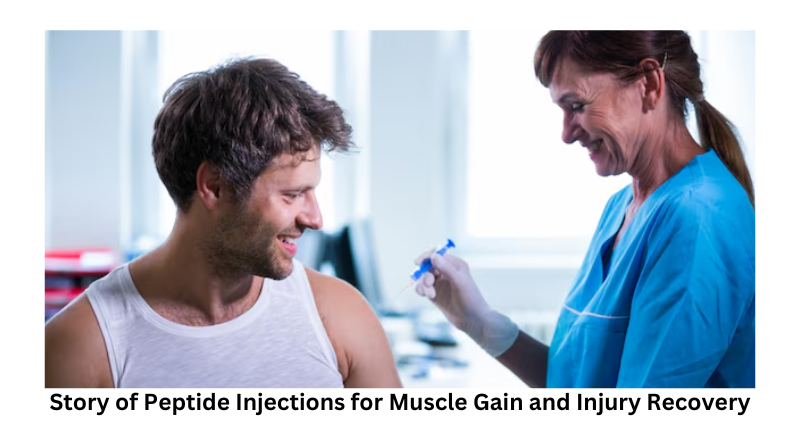The Real Story of Peptide Injections for Muscle Gain and Injury Recovery
The 38-year-old Juan Leija was a serious lifter and personal trainer, but he was unable to perform some of the most basic exercises due to elbow discomfort. He recalls, “I’d had tendinitis for a year, but it had been really bad for about half a year.” There seemed to be a broken object within.
A friend of Leija’s who runs a health clinic informed him about BPC-157 just as he was beginning to doubt his capacity to exercise. According to his acquaintance, an injectable peptide molecule may be able to relieve Leija’s elbow discomfort, something that a year of traditional and complementary therapy was unable to achieve.
Leija explains, “I went home and looked it up.” There wasn’t much evidence, but there was a lot of enthusiasm. Because of its mending properties, satisfied users—athletes, warriors, soldiers, and gym rats—referred to it as the Wolverine peptide.
BPC-157 belongs to an expanding group of substances known as peptides that are becoming more and more popular in the fitness, health, and antiaging communities. The hype stems from their purported ability to help you lose weight, increase muscle mass, improve sleep, or, in the case of peptide PT-141, reignite your sexual desire—all without the negative side effects of more potent, riskier alternatives like testosterone and synthetic growth hormone.
Certain peptide names, such as MK-677, resemble covert mind-control tests. Some, such as sermorelin, appear to be there purely to confuse 12-year-olds at a spelling bee. What are peptides, though? Why are they now being promoted by so many people? Do they even function?
Peptides’ potential
According to Ryan Greene, D.O., chief medical officer of Monarch Athletic Club in West Hollywood, California, “PEPTIDES ARE SHORT chains of amino acids.” In fact, your body makes over 7,000 of them, each with a distinct function, such as controlling your appetite, natural growth hormone, and metabolic health.
Nowadays, there is a belief in gym culture that injecting peptides—even lab-made ones—is a safer method of gaining muscle than using anabolic steroids and/or human growth hormone (hGH). The sales pitch, however, is not new. Since the late 20th century, antiaging clinics have promoted the same promises of appearance and functionality.
According to Graham Simpson, M.D., a doctor with Opt Health, a telemedicine clinic that sells peptides, the pricing is novel. For example, you might spend a few hundred dollars a month for peptides that encourage your body to create its own growth hormone, rather than $1,200 a month for doses of growth hormone, the original fountain of youth. Or you may spend money on peptides that are thought to promote tissue-healing cells.
People are injecting the thing every day or a few times a week because it is so appealing. These therapies are “reasonable things we can do to [increase] our health span and life span,” according to Dr. Simpson. Dr. Simpson’s Opt Health colleague Jeremie Walker, M.D., concurs, saying, “They’re imitating what your body does already, but with more specificity.”
The scientific findings about peptides
Despite all the purported advantages of these peptide injections, none of the ones we listed to increase healing, delay aging, or improve sexual function have received FDA approval. (The FDA has cleared the use of sermorelin in children with pituitary problems.) No athlete participating in a drug-tested sport should come in contact with BPC-157 or other growth-hormone-releasing peptides, as they have been prohibited by the World Anti-Doping Agency. WADA’s prohibition implies that they could offer a benefit, which implies that they might have anything.
However, you don’t find much scientific study when you search for it. In one research, BPC-157 caused rat tendon tissue to recover more quickly. In the Journal of Clinical Endocrinology & Metabolism, another research on MK-677 revealed that it increased growth hormone levels in actual elderly people to the typical range seen in young adults. But the type of extensive clinical studies you rely on to determine the value of a product? Not yet.
